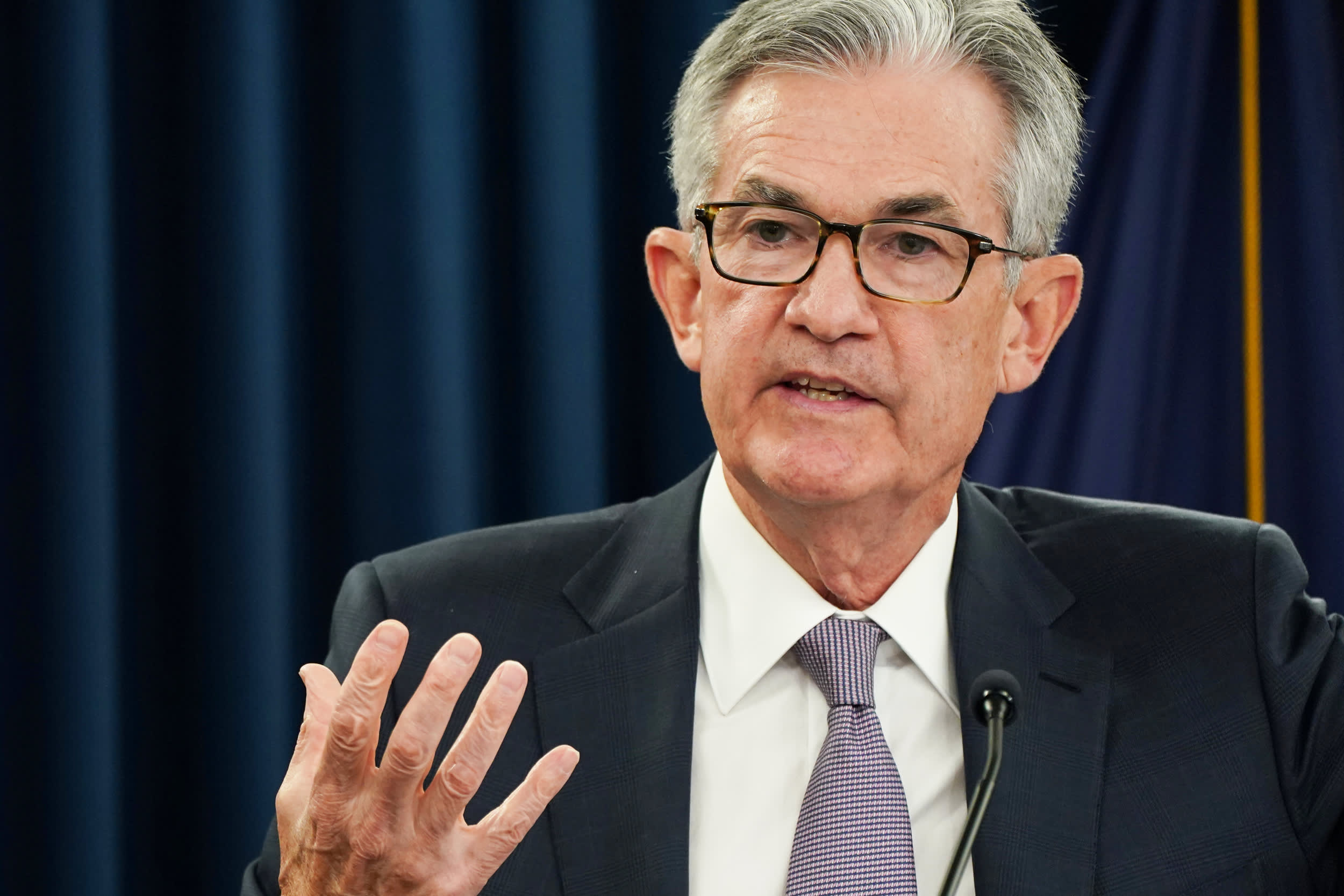The Federal Reserve kept its pledge to keep interest rates anchored near zero and promised to keep rates there until inflation rises consistently.
As the central bank concluded its two-day policy meeting Wednesday, it said short-term rates would remain targeted at 0%-0.25%. Officials also changed their economic forecasts to reflect a smaller decline in GDP and a lower unemployment rate in 2020.
Projections from individual members also indicated that rates could stay anchored near zero through 2023. All but four members indicated they see zero rates through then. This was the first time the committee forecast its outlook for 2023.
In addition, officials addressed a new policy regime in which the Fed will allow inflation to run somewhat above the 2% target rate before hiking rates to control inflation.
“These changes clarify our strong commitment over a longer time horizon,” Chairman Jerome Powell said at his post-meeting news conference.
The policymaking Federal Open Market Committee adopted specific language to emphasize the inflation goal.
“With inflation running persistently below this longer run goal, the Committee will aim to achieve inflation moderately above 2 percent for some time so that inflation averages 2 percent over time and longer-term inflation expectations remain well anchored at 2 percent. The Committee expects to maintain an accommodative stance of monetary policy until these outcomes are achieved,” the post-meeting statement said.
The committee added that “it will be appropriate to maintain this target range until labor market conditions have reached levels consistent with the Committee’s assessments of maximum employment and inflation has risen to 2 percent and is on track to moderately exceed 2 percent for some time.”
Stocks added to gains following the Fed release, though government bond yields were little changed.
“The guidance was a little more explicit than perhaps I would have thought, but the outcome is the same,” said Kathy Jones, head of fixed income for Charles Schwab. “We’re still looking at the probability of zero interest rates at least through 2022 and median estimates for 2023, although there were a few who think that liftoff happens in 2023.”
Powell called the forward guidance “powerful” and said the committee feels “rates will remain highly accommodative until the economy is far along in this recovery.”
In addition to the rates decision, the committee altered its outlook for GDP, unemployment and inflation for the coming years.
The committee now sees a full-year GDP decline of 3.7%, considerably better than the 6.5% drop forecast in June. However, it lowered its 2021 outlook to 4% from 5% and 2022 to 3% from 3.5%. The committee expects 2.5% GDP growth in 2023.
The unemployment rate projection also was brought down, to 7.6% from 9.3%, which was already above the 8.4% jobless rate for August. The committee also marked up its inflation projection for 2020 to 1.2% from 0.8% in June, though it still does not see it hitting the 2% goal until 2023.
The moves come amid stronger economic data during the third quarter. Most economists see a sharp rebound for the U.S. after it plunged into recession in February, a month before the World Health Organization declared the coronavirus a pandemic.
Since then, the Fed has unloaded an unprecedented array of policy tools aimed at keeping markets functioning and the economy afloat. It initiated about a dozen lending and liquidity programs that have coincided with a massive rise in stocks and a steadying and in some cases major rise in economic indicators.
There was little indication that the Fed would adapt its bond-buying program. The statement said the central bank would continue to purchase Treasurys and mortgage-backed securities “at the current pace to sustain smooth market functioning and help foster accommodative financial conditions, thereby supporting the flow of credit to households and businesses.”
Minutes from the July meeting indicated that most members wanted to alter the goal of the so-called quantitative easing to go from market functioning to economic support.
“We think our asset purchases are doing both those things,” Powell said.
